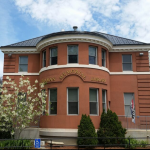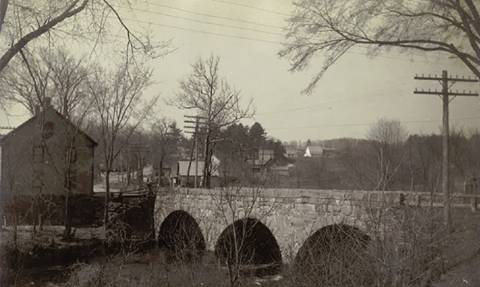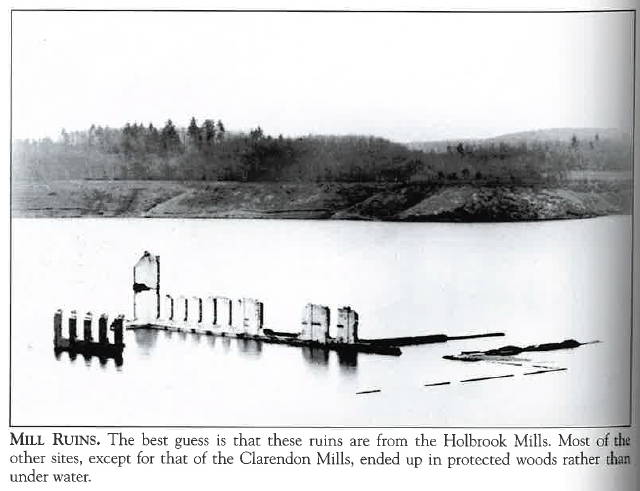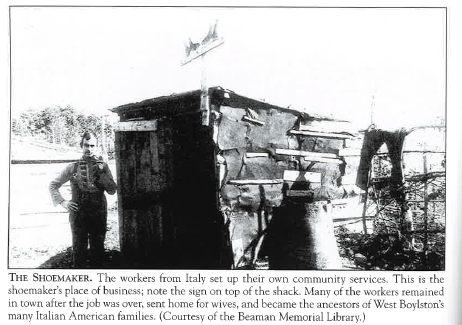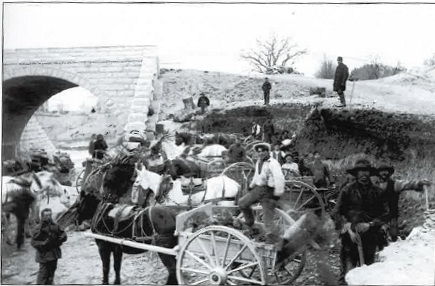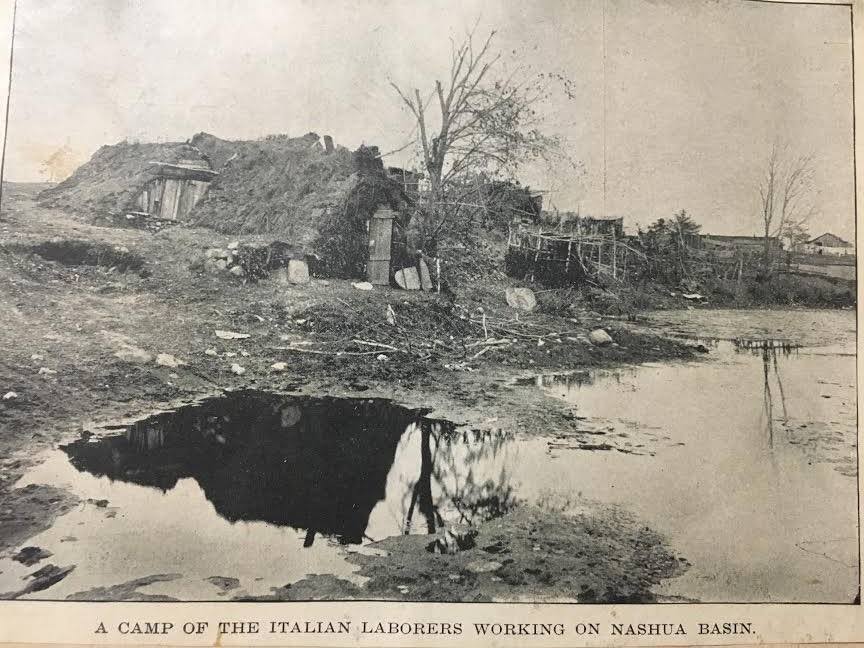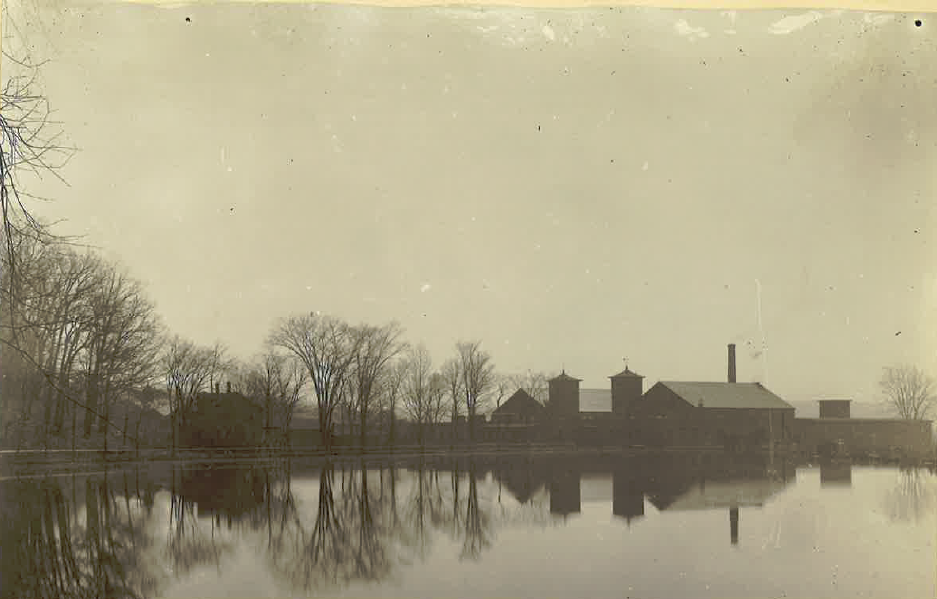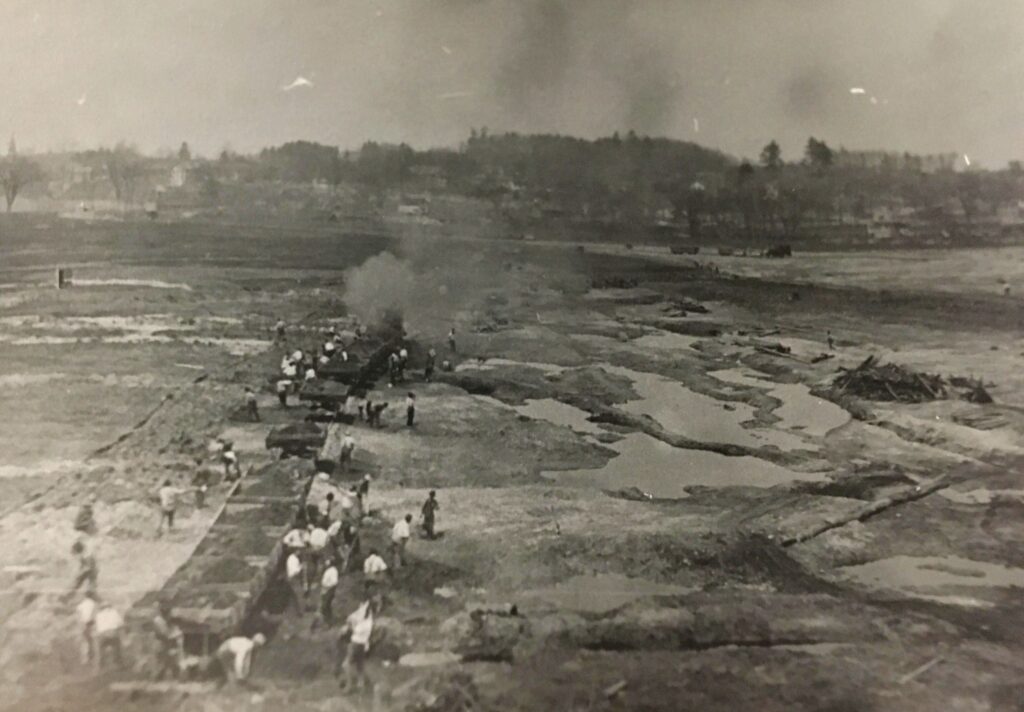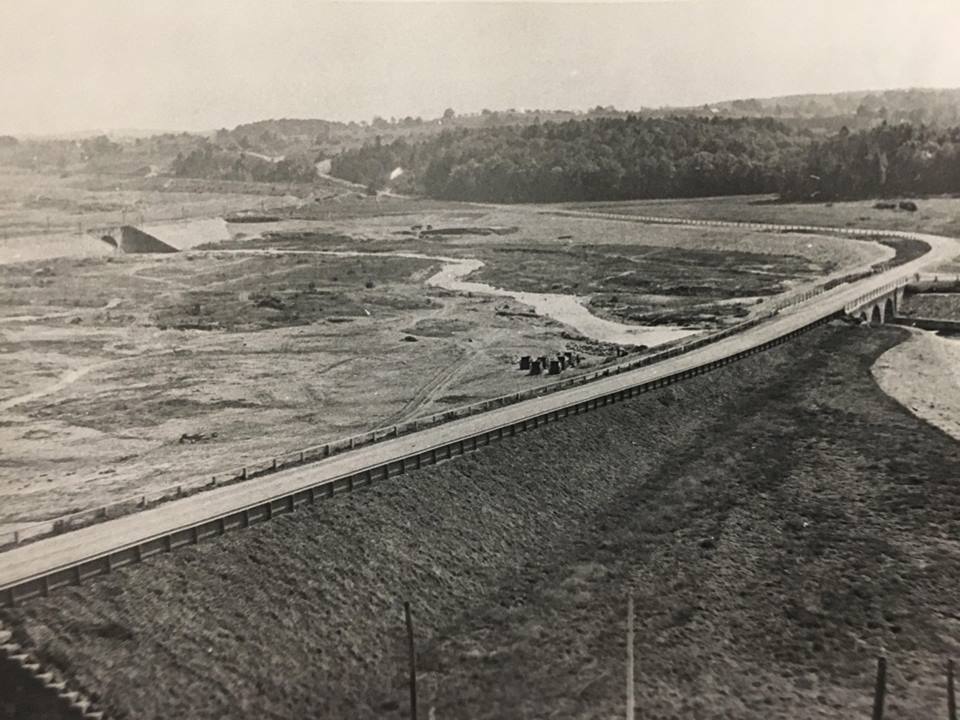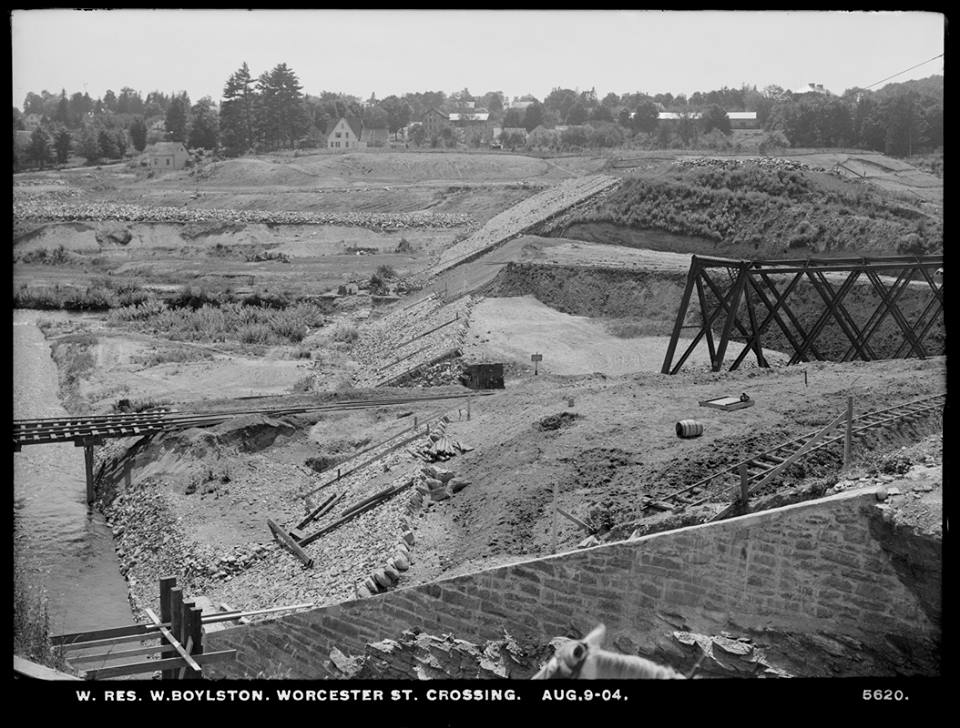West Boylston History
The Flood of 1900
In spring 1900, there was a flood which damaged property and, as depicted in the picture, the roads. The stone bridge was built in 1846 and wasset to be demolished as the reservoir came in. Nature had a different plan and destroyed the bridge in 1900, months or even years before the State planned to…
Read MoreMill Ruins (Unknown)
Many buildings were torn down as a result of the construction of the reservoir, but some buildings were not completely eliminated. Consider the mill in the photograph below, suspected to be the ruins of Holbrook Mills. The mostly submerged wreck, once a busy mill surrounded by other homes and businesses, is a perfect reflection for…
Read MoreLake Washacum (1800’s)
Today, many people enjoy taking canoes and kayaks out onto Lake Washacum. In the late 1800s, there was a steamboat which took people around the lake on a scenic tour. The tour cost 5 cents per person, a reasonable price for a quick trip on a boat. As seen the picture below, the trips were…
Read MoreItalian Immigrant Labor (1900’s)
The Reservoir was built mostly with Italian immigrant labor. Some of these laborers came from Italy for the specific purpose of working on the reservoir and left their wives and children behind. Below are two images depicting the “Shantytown” constructed by the workers. Though offered housing in mill tenements or recently sold homes, the workers…
Read MoreLaborers (1900’s)
Building the reservoir required manpower and the employment of an ancient construction practice: the use of beasts of burdens. Horses and mules, and possibly animals like oxen, helped carry huge loads across the river basin. Below, we see a few laborers sitting on top of a cart pulled by a horse (or mule). The cart…
Read MoreImmigrant Workers (1900’s)
Construction on the Wachusett Reservoir lasted nearly ten years. Towns and people were displaced. As we explore our flooded history, let us not forget the laborers who devoted their energy to the reservoir’s construction. Many of the reservoir’s builders were immigrants, many of them Italian, and some of them could not understand English. In the…
Read MoreBeaman Mill (1700-1800’s)
Here we have a pristine view of the Beaman Mill, later known as the Clarendon Mill, from the opposite side of the Mill Pond. Town founder Ezra Beaman founded the mill in the late 1700s with advice from Samuel Slater, the textile factory tycoon who is known as the “Father of the Industrial Revolution” for…
Read MoreTree Removal (Early 1900’s)
Building the reservoir took a significant environmental cost. There were the obvious casualties: trees and plants in the valley itself were cut down, their roots torn up. After the trees and buildings were gone, the reservoir’s builders dug down an extra six feet to ensure that no pollution would seep into the filled reservoir. We…
Read MoreReservoir Finally Finished (Early 1900’s)
The Wachusett Reservoir took over ten years to plan and build. The process started in 1895 and didn’t end until 1908. The work required the building of new bridges, roads, and fills in addition to the obvious damming of the local rivers. Below are two pictures taken near Oakdale during the construction. These photographs were…
Read MoreEnd of Construction (1904)
Below are two pictures taken near the end of the reservoir’s construction.Both of these pictures show a town in transition. In 1904 and 1905, this area transformed from a bustling downtown to the reservoir we know today. These images came from the Digital Commonwealth, an online resource with thousands of photographs from the State’s history.…
Read More